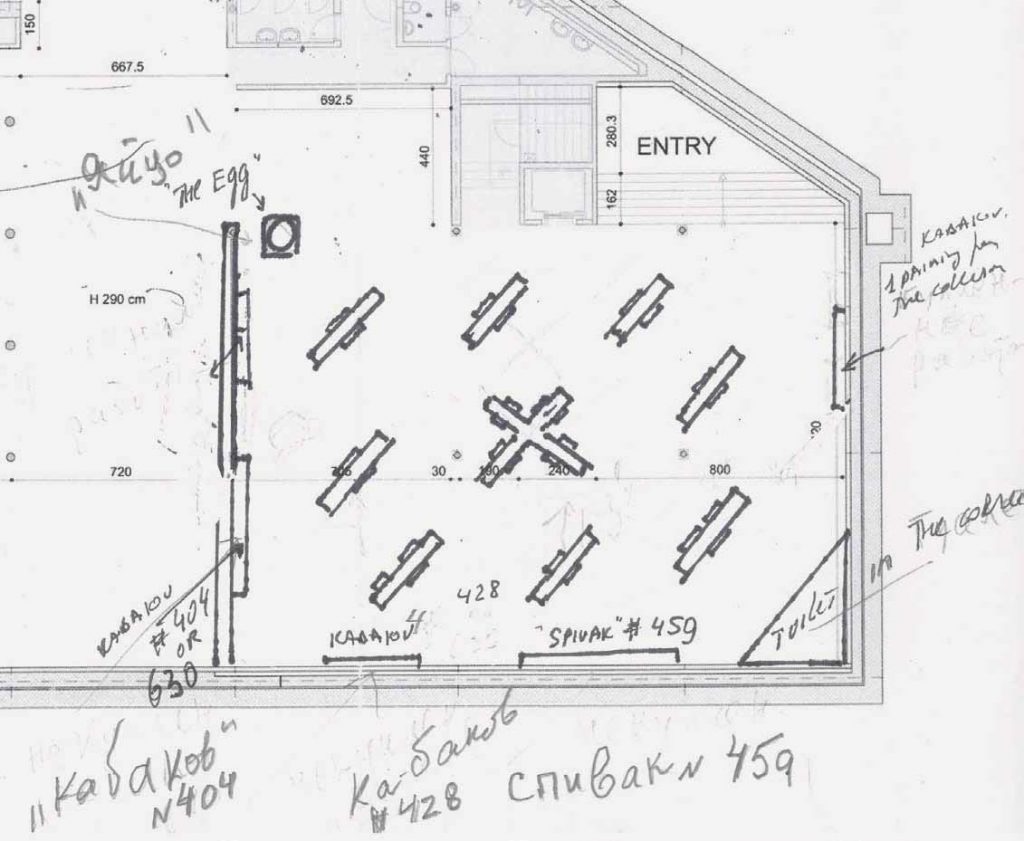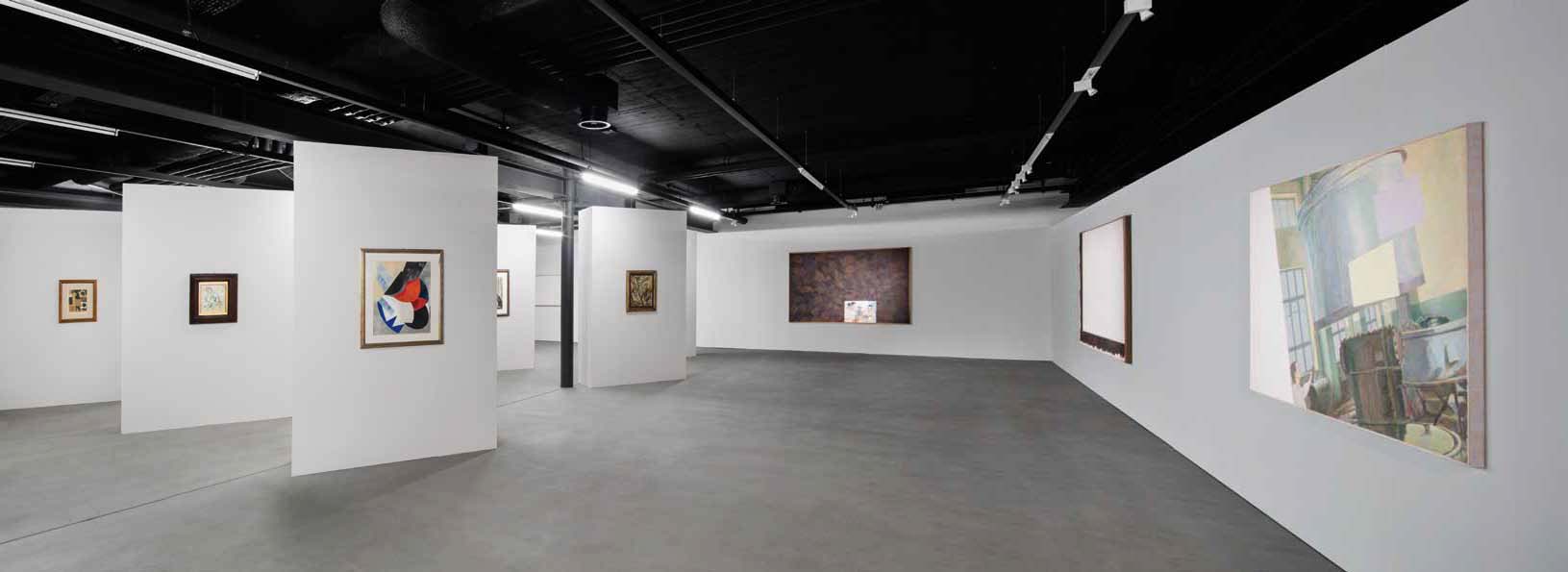The Kabakovs and the Avant-Gardes
with Emilia Kabakov
YEAR: 2016
CATALOGUE NUMBER: 195
PROVENANCE
Giancarlo and Danna Olgiati Collection. On long-term loan to Spazio -1, City of Lugano
NOTES
No. 51 Toilet in the Corner is part of this installation.
See CRI, vol. 1, no. 51, pp. 336–339. See CRP, vol. 2, no. 330, p. 49; no. 331, p. 50; no. 459, p. 192; no. 404, p. 124; no. 428, p. 148.
EXHIBITIONS
LAC – Lugano Arte e Cultura, Spazio -1, Lugano, Switzerland
Ilya & Emilia Kabakov: The Kabakovs and the Avant-Gardes, September 16, 2016 to January 8, 2017
CONCEPT OF THE INSTALLATION
We received an interesting and quite paradoxical proposal from the new museum in Lugano: to combine two expositions in one space—a group collection of graphic works by Russian and Italian avant-garde artists, and an exhibit of objects and paintings by Ilya and Emilia Kabakov. The paradox and strangeness were obvious: there was an incompatibility in terms of time—the beginning and the end of the twentieth century; a difference in the artistic epochs in terms of their content; these were diverse genres that are difficult to combine visually—graphic works, watercolors, and large-scale paintings; and there was a multitude of names and their historical significance! Each name is a separate chapter in the history of modern art, and then next to them, as though on the other end of a seesaw, are the names of artists who are standing far away from such a step.
Meeting such a challenge was very interesting: to preserve this distinction and, at the same time, to create some sort of integrated work.
We arrived at the following solution. The exhibit consisted of two parts. The expositions of the Russian and Italian avant-garde occupied the central, main part of the space. But each page of the graphics of this collection was in a small format!
Hence, we filled up the exhibit space, which was rather large, with separately standing white walls that were not large in terms of their dimensions. Only one work of a given artist hung on each wall, thereby fully preserving total attention to this work alone. We placed the paintings, installation, and sculpture by the Kabakovs on three walls surrounding this central exposition. Now we can speak about the main “trick” of this entire work. First, the inner small walls were placed not parallel to the main walls of the dwelling, but diagonally, at an angle. This imparted to the entire space the unexpected effect of motion, a dynamism that was characteristic in terms of content to the entire avant-garde. Second, one or another of the works by the Kabakovs were constantly peeking through the intervals or spaces between these small walls, visually creating the impression of alienation, superfluousness, and, at the same time, of their curious participation in the overall visual action. The visitors to the installation were faced with judging the comparability of both layouts, about the meaning of the two connected and yet separated parts of such a paradoxical exhibition.
Images
Literature






